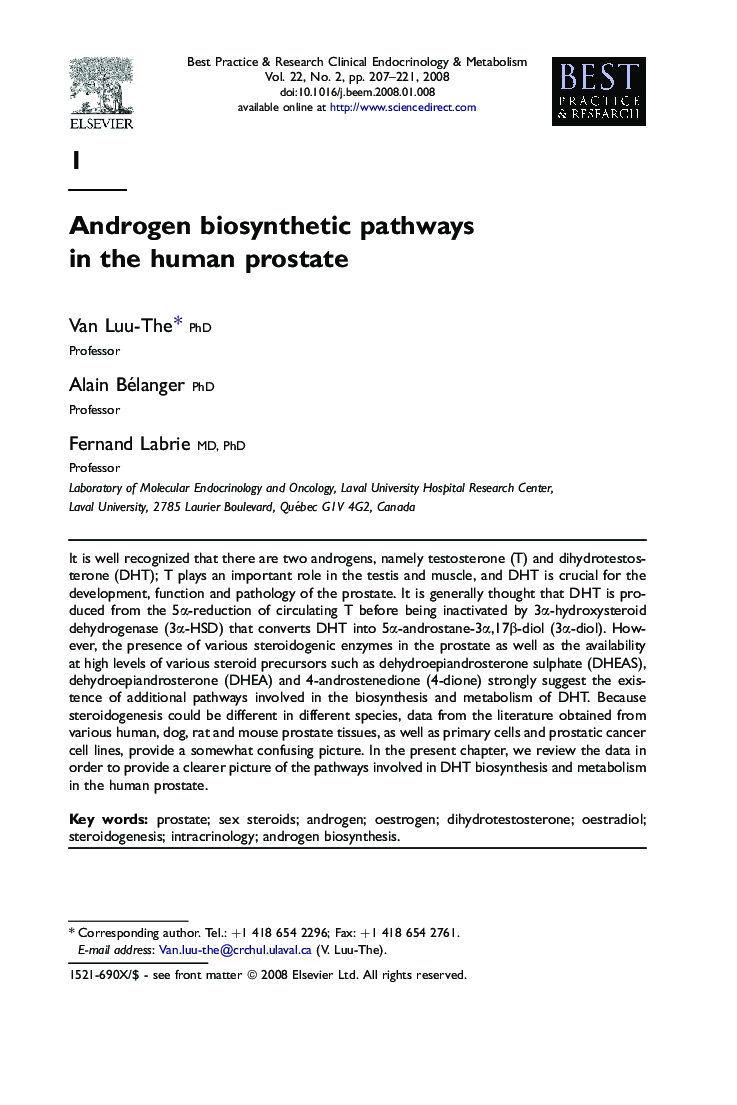| Article ID | Journal | Published Year | Pages | File Type |
|---|---|---|---|---|
| 2792188 | Best Practice & Research Clinical Endocrinology & Metabolism | 2008 | 15 Pages |
It is well recognized that there are two androgens, namely testosterone (T) and dihydrotestosterone (DHT); T plays an important role in the testis and muscle, and DHT is crucial for the development, function and pathology of the prostate. It is generally thought that DHT is produced from the 5α-reduction of circulating T before being inactivated by 3α-hydroxysteroid dehydrogenase (3α-HSD) that converts DHT into 5α-androstane-3α,17β-diol (3α-diol). However, the presence of various steroidogenic enzymes in the prostate as well as the availability at high levels of various steroid precursors such as dehydroepiandrosterone sulphate (DHEAS), dehydroepiandrosterone (DHEA) and 4-androstenedione (4-dione) strongly suggest the existence of additional pathways involved in the biosynthesis and metabolism of DHT. Because steroidogenesis could be different in different species, data from the literature obtained from various human, dog, rat and mouse prostate tissues, as well as primary cells and prostatic cancer cell lines, provide a somewhat confusing picture. In the present chapter, we review the data in order to provide a clearer picture of the pathways involved in DHT biosynthesis and metabolism in the human prostate.
